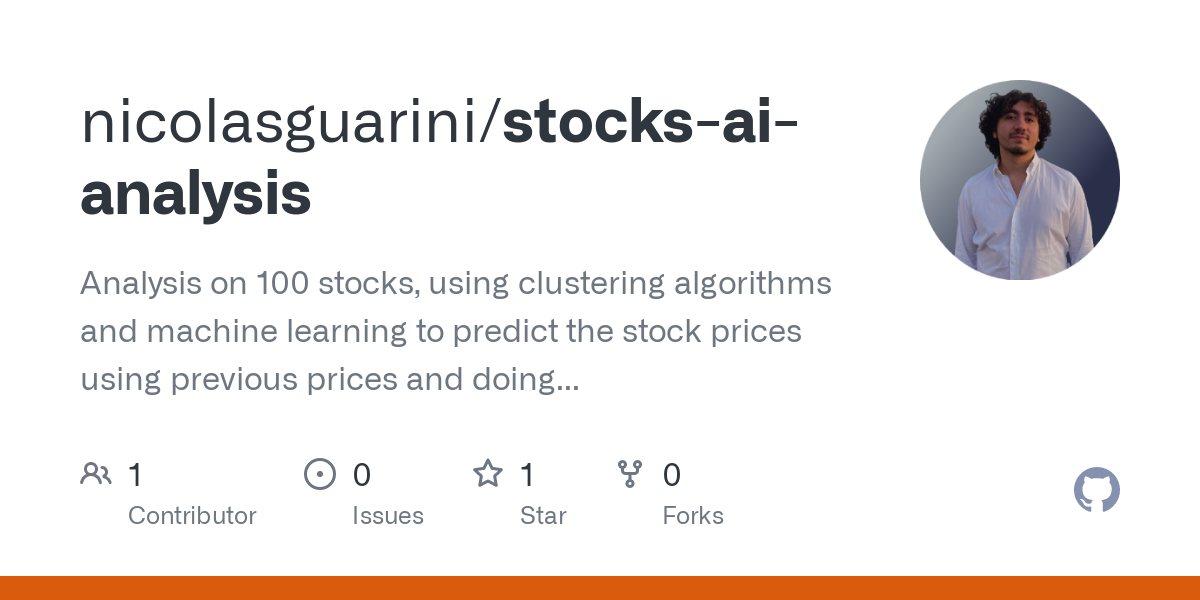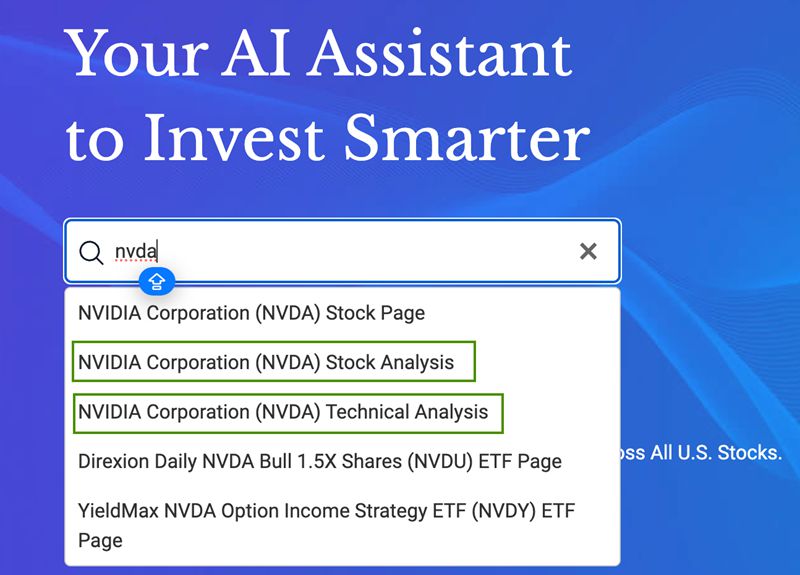20 Handy Tips For Deciding On AI Stock Trading Sites
20 Handy Tips For Deciding On AI Stock Trading Sites
Blog Article
Top 10 Tips For Assessing The Ai And Machine Learning Models In Ai Software For Predicting And Analysing Trading Stocks
In order to get accurate valuable, reliable and accurate insights, you need to test the AI models and machine learning (ML). Incorrectly designed or overhyped model could result in financial losses as well as flawed forecasts. We have compiled our top 10 suggestions on how to evaluate AI/ML-based platforms.
1. Understand the model's purpose and the way to apply it.
Clarity of goal: Decide if this model is intended for trading in the short term or long-term investment and sentiment analysis, risk management etc.
Algorithm transparency: Check if the platform provides the type of algorithms utilized (e.g., regression, neural networks, decision trees, reinforcement learning).
Customization - Find out if you can tailor the model to fit your trading strategy and risk tolerance.
2. Perform an analysis of the model's performance metrics
Accuracy Verify the accuracy of the model's prediction. Don't rely only on this measure, however, as it may be inaccurate.
Precision and recall: Assess the accuracy of the model to discern true positives, e.g. correctly predicted price fluctuations.
Risk-adjusted returns: Assess the likelihood that the model's predictions will lead to profitable trades after accounting for risk (e.g., Sharpe ratio, Sortino ratio).
3. Check your model by backtesting it
Performance history The model is evaluated by using data from the past to evaluate its performance under prior market conditions.
Testing outside of sample: Make sure the model is tested with data it was not trained on to avoid overfitting.
Scenario-based analysis: This entails testing the accuracy of the model in various market conditions.
4. Check for Overfitting
Overfitting signs: Look for models that are overfitted. They are the models that perform exceptionally well on training data and less well on unobserved data.
Regularization: Check whether the platform uses regularization techniques such as L1/L2 and dropouts to prevent excessive fitting.
Cross-validation. Make sure the platform is performing cross validation to test the model's generalizability.
5. Examine Feature Engineering
Relevant features: Determine if the model uses important features (e.g. volume, price technical indicators, sentiment data macroeconomic variables).
Selection of features: You must be sure that the platform is choosing features that have statistical value and avoid unnecessary or redundant information.
Dynamic feature updates: Determine whether the model is able to adapt to changing market conditions or new features over time.
6. Evaluate Model Explainability
Interpretability (clarity) It is important to ensure whether the model can explain its assumptions clearly (e.g. value of SHAP or importance of features).
Black-box models are not explainable Be wary of software with complex algorithms including deep neural networks.
User-friendly insight: Determine whether the platform provides actionable insight to traders in a manner that they can comprehend.
7. Test the ability to adapt your model
Changes in the market - Make sure that the model is modified to reflect changes in market conditions.
Continuous learning: Verify that the platform updates the model with new information to enhance the performance.
Feedback loops: Ensure that the platform is incorporating feedback from users or real-world results to refine the model.
8. Look for Bias and Fairness
Data bias: Ensure whether the information used in the training program are real and not biased (e.g., a bias toward certain industries or times of time).
Model bias: Make sure the platform monitors the model biases and minimizes them.
Fairness. Be sure that your model doesn't unfairly favor specific industries, stocks, or trading methods.
9. Evaluation of Computational Efficiency
Speed: Check whether the model produces predictions in real-time with minimal latency.
Scalability Verify the platform's ability to handle large sets of data and multiple users with no performance degradation.
Resource usage: Verify that the model is optimized to make efficient use of computational resources (e.g. the use of GPUs and TPUs).
Review Transparency & Accountability
Model documentation. Make sure you have a thorough description of the model's design.
Third-party audits: Determine whether the model has been independently validated or audited by third-party audits.
Check whether the system is equipped with mechanisms to detect models that are not functioning correctly or fail to function.
Bonus Tips
Case studies and user reviews: Research user feedback and case studies to assess the model's performance in real life.
Trial period: Use the demo or trial version for free to try out the models and their predictions.
Customer support: Make sure that the platform provides a solid support to address problems with models or technical aspects.
Use these guidelines to evaluate AI and ML models for stock prediction, ensuring that they are reliable, transparent and aligned with trading goals. Have a look at the most popular best ai copyright trading bot advice for blog info including best free copyright trading bot, invest in ai stocks, best ai for stock trading, ai investing, investing ai, ai coin price prediction, ai stock trading, best ai for trading, trader ai intal, free ai investing app and more.
Top 10 Suggestions For Evaluating The Trial And Flexibility Ai Platform For Analyzing And Predicting Stocks
It is crucial to assess the trial and flexibility capabilities of AI-driven stock prediction and trading systems before you commit to a subscription. Here are 10 top ways to evaluate each feature:
1. You can try a no-cost trial.
Tip: Check if the platform gives a no-cost trial period to test its features and performance.
The reason: You can try the platform without cost.
2. Duration and Limitations of the Trial
Tip - Check the validity and duration of the free trial (e.g., restrictions on features or access to data).
What's the reason? By understanding the trial constraints and limitations, you can decide if the trial is an accurate evaluation.
3. No-Credit-Card Trials
Look for trial trials at no cost that don't ask you for your credit card's number in advance.
The reason: This can reduce the chance of unexpected charges and make it easier for users to choose not to.
4. Flexible Subscriptions Plans
Tip: Check if there are clearly defined pricing tiers as well as flexible subscription plans.
Flexible plans let you choose the amount of commitment that is most suitable to your budget and needs.
5. Customizable features
TIP: Ensure that the platform you're using allows for customization, including alerts, risk settings, and trading strategies.
It is crucial to customize the platform as it allows the platform's functions to be customized to your individual trading goals and needs.
6. The ease of cancelling
Tip: Assess how easy it is to cancel or upgrade the subscription.
Why: An easy cancellation procedure will ensure you're not tied to the plan you don't enjoy.
7. Money-Back Guarantee
Tips: Select platforms that provide a cash back guarantee within a specified time.
What is the reason? It offers a safety net in case the platform doesn't meet your expectations.
8. Trial Users Get Full Access to Features
Tips - Ensure that the trial version has all the features that are essential and is not a limited edition.
You'll be able to make a better decision if you test the full functionality.
9. Customer Support for Trial
Tips: Assess the quality of customer support provided during the trial period.
Why: Reliable support ensures that you will be able to resolve any issues and make the most of your trial experience.
10. Feedback Mechanism after-Trial
Find out if the platform asks for feedback from users following the test to improve the quality of its service.
Why: A platform that takes into account user feedback is more likely to evolve and adapt to user demands.
Bonus Tip Options for scaling
If you are seeing your trade grow it is recommended that the platform has more advanced options or plans.
If you take the time to consider the options available for trial and flexibility, you will be able to make a well-informed decision on whether an AI stock prediction platform is the best option for you. View the top rated ai investing app tips for more tips including ai trading bots, trading ai bot, investing in ai stocks, best copyright prediction site, ai for stock trading, ai trading platform, copyright ai bot, ai coin price prediction, ai stock predictions, ai stock trading and more.